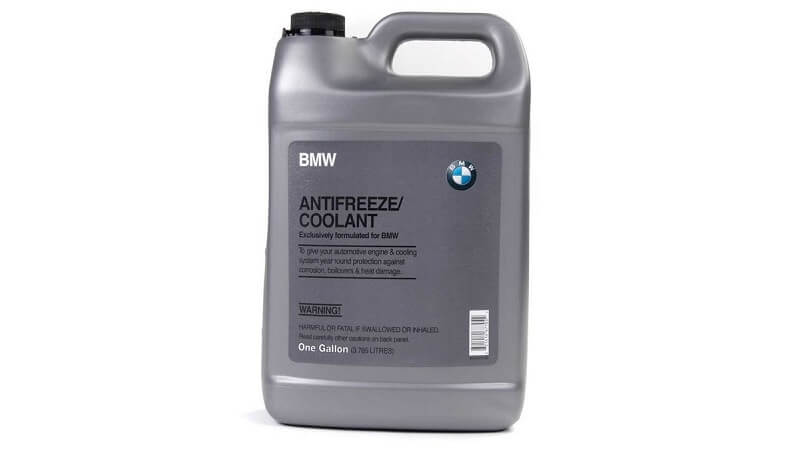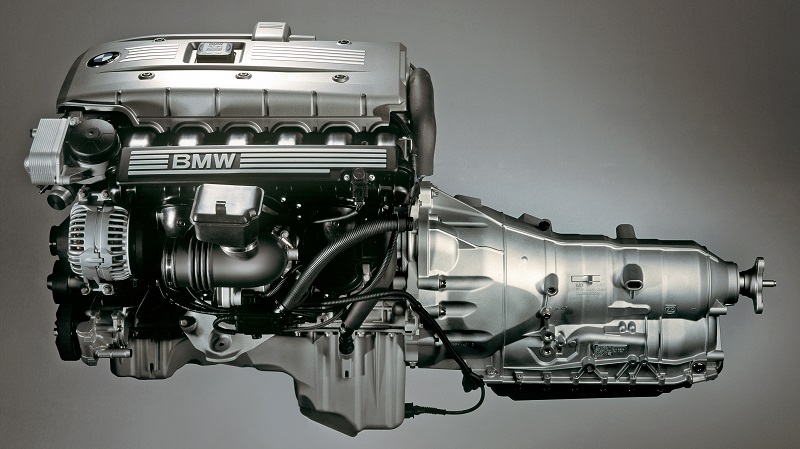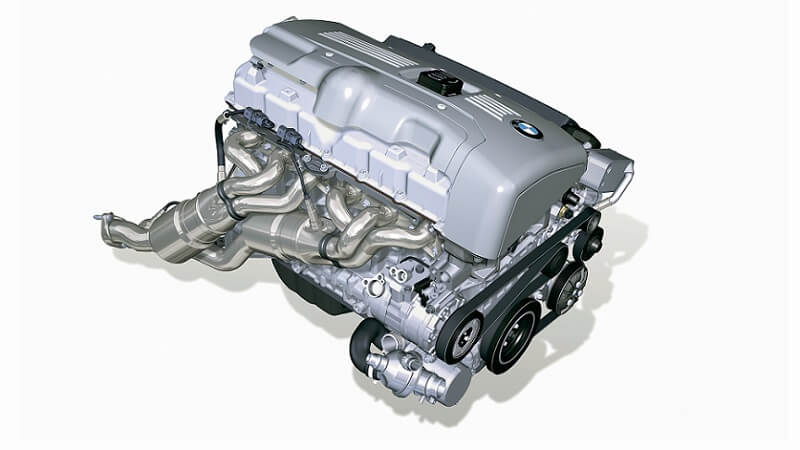Variable valve timing was a true game-changer when it first appeared. Born as a means to achieve the ultimate performance, but also efficiency, VVT was quickly adopted by almost every major car manufacturer out there. This, of course, includes BMW who dubbed their approach to variable valve timing as VANOS, or Variable NockenwellenSteuerung in German.
BMW’s VANOS is something that most BMW owners are fairly familiar with as these systems often dictate how well your car will perform in different scenarios. But how does VANOS work exactly? Join us as we go down this rabbit hole in search of answers.

How Did Variable Valve Timing Come to Be?
Early engine designs were relatively crude when it came to how they delivered power to the wheels. They were somewhat linear in terms of output, and not at all flexible. That didn’t matter much because the rest of the car wasn’t any more refined either.
However, as time went by, our need for better fuel economy, fewer emissions, and most importantly performance grew rapidly. Car manufacturers were racing to figure out how to make their existing engines better in all these categories, but also how to take future engines to the next level.
First came the electronic fuel injection. Carburetors went the way of the dinosaur, making room for complex fuel injection systems controlled by tiny little computers. This was crucial as it paved the way for electronic engine control.
The next big thing was variable valve timing (VVT). While early systems were around in one shape or another since the early 1900s, this technology became widespread only fairly recently.
What Is VVT?
Variable valve timing (VVT) is a process of adjusting the valve timing of the engine depending on the current performance profile. Modern engines have camshafts that are driven by the crankshaft.
Cams have lobes on them that activate intake or exhaust valves as they rotate. By adjusting the timing of the camshaft, you can change when the intake/exhaust valves open, how long they stay open, and when they close.
By doing so, you can extract more power from the engine, make it a lot more efficient, and reduce the amount of emissions it produces. The Canadian government has concluded that VVT increases the efficiency of the engine anywhere from 1% to 6%. Depending on what you drive, this means $200 – $1000 in gas savings over a span of 10 years.
Of course, the real benefit here is engine efficiency. In some cars, variable valve timing allows for a 25% peak power boost without involving any other variable.
The beautiful thing about VVT is that every major car manufacturer out there came up with a design of their own. Some used a cam switching type of VVT, like Honda’s VTEC where you have two different cam lobe profiles that switch when you hit a certain RPM. Others, like BMW, used a cam phasing design.
What is VANOS, and How Does It Work?

VANOS is a cam phasing type of VVT where the angle of the entire camshaft is advanced or retarded depending on what the ECU wants to do at that moment. To do this, BMW VANOS relies on a unique camshaft design.
The intake cam of the VANOS system is fitted with a spline gear that features helical teeth at the drive end. Facing the gear is a cup that slides over the helical teeth. With a matching helical pattern, this cup can adjust its position on the helical gear. The further it slides over the gear, the more advancement in the timing you get. The position of the cap relative to the spline gear dictates how advanced or retarded the timing of the intake cam is going to be.
VANOS is a hydromechanical system, meaning that this cam timing is controlled by fluid pressure. When the ECU decides to adjust the timing, it activates a solenoid that opens and allows the oil to enter the system.
Types of VANOS
There are three main types of VANOS systems used in BMW cars made from 1992 until today.
- Single VANOS
- Double VANOS
- Double VANOS with Valvetronic
Single VANOS is the original design first seen on the M50 engine back in 1992. It’s called Single VANOS because it only features the VANOS system on the intake cam. Just a few years later, in 1996, BMW debuted the first double VANOS system on their S50 engine. With this new system, both the intake and exhaust cams feature the VANOS gear, allowing for the ECU to adjust the timing of both.
The next step towards the ultimate efficiency came in the form of double VANOS with Valvetronic. The system as first introduced in 2001 in a BMW E46, and would go on to become the norm for future BMW models. We’ll cover the inner workings of the Valvetronic system in a separate guide, so here’s the gist of it.

Valvetronic is a system that controls how far the valves can open at any given time, compared to VANOS controlling when they will open. BMW has introduced this solution in an effort to improve efficiency, but also get rid of the standard throttle body design. With Valvetronic, you don’t need to control how much air enters the engine on the intake. Instead, you can simply control how far the intake valves open.
The Valvetronic system sits on top of the intake camshaft and features a large electric motor as well as a drive shaft of its own. The motor is positioned perpendicular to the drive shaft and features a worm gear. This worm gear mates with a sprocket on the shaft. As the motor turns, the sprocket adjusts the angle of the shaft, thus controlling how far the valves open.
When Does VANOS Kick In?
Unlike VTEC, VANOS doesn’t really “kick in”. Cam phasing VVT systems generally don’t have a single point where they step in and make a massive difference. Instead, the system works throughout the entire rev range.
How far the system will advance the timing depends on several critical pieces of data
- Engine RPM
- Engine Temperature
- Engine Load
The moment you turn your engine on, VANOS will start adjusting the timing. Stepping on the throttle leads to more advancement until it reaches the maximum of 12.8 degrees in the mid-range band. As you move closer to the top end of the RPM range, the timing will be once again retarded.
Of course, these figures depend on the specific engine as different BMW engines have different maps.
What Happens when VANOS Fails?
Considering that VANOS is working in all parts of the RPM range, you’ll run into a number of issues when it fails. When cam phased VVT systems malfunction, they usually have a wider impact on the engine’s performance compared to cam switching systems that kick in at a certain RPM.
That being said, VANOS failure symptoms vary depending on what went wrong and how bad the malfunction actually is. Here’s a list of things you might run into in case of VANOS failure:
- Rough idle
- Loss of torque
- Loss of power
- Engine stalling
- Bad fuel economy
- Frequent limp mode activation
Rough Idle
It’s a common misconception that VANOS is dormant when your engine is idling. That’s not true. There’s a brief period of VANOS inactivity when you turn the engine that lasts for a specified number of camshaft rotations.
This time is used by the ECU to assess the cam position, engine temperature, load, and other metrics, which it will then use to adjust valve timing in a way that meets your engine’s current needs. Mind you, we’re talking milliseconds between the moment you turn the engine and the valve timing adjustments being made.
Because of that, any issue with the VANOS system can easily lead to rough idle issues as the engine isn’t getting the right timing adjustment post-startup.
Loss of Torque and Power
One of the main benefits of variable valve timing is the ability to manipulate torque and power throughout the rev range. Torque and power bleed-off is a known symptom of VANOS failure that is often caused by failing seals. These seals are meant to maintain the pressure inside the system. Once they go, you’ll begin experiencing a loss of power throughout the band, while your engine might also feel sluggish, especially at low RPM.
One thing to note is that loss of power and torque doesn’t always happen suddenly. In many cases, it’s a gradual process that takes time.
Engine Stalling
Much like idle issues, your engine might be stalling because your VANOS system is malfunctioning. Depending on the nature of the failure, the system could be too slow to adjust the timing of the engine, causing a sudden drop in the RPM and ultimately a stall. This usually happens during the winter.
Bad Fuel Economy
The fuel economy of your BMW depends on a number of factors, one of them being valve timing angles. Your engine is essentially determining how long the intake (and exhaust in case of double VANOS) valves will stay open, thus affecting how much fuel is being injected into the cylinder.
A faulty VANOS system will essentially disturb this perfect valve timing profile, causing the engine to burn more fuel than necessary.
Limp Mode
The limp mode in your BMW is a safety feature that is triggered whenever the ECU logs a serious issue with the car. A faulty VANOS won’t always push your car into limp mode, but it very well could. A check engine light is a common occurrence as well, especially on later BMW models.
What Causes VANOS Failure?

Much like with all things BMW, VANOS is a great system as long everything works right. Unfortunately, there are several things that can cause it to fail. We’ve already mentioned seals wearing out, and this is arguably a fairly common cause of issues. However, the seals aren’t the only thing that wears out.
Most VANOS systems are fitted with a number of bearings and washers. Over time, these tend to wear out, which usually causes the spline gear to tilt on its axis as the wear gets worse.
Clogged oil feed lines are another common issue. Most VVT systems out there are sensitive to worn engine oil or any debris in said oil. Old, worn-out oil has a completely different viscosity profile than new, fresh oil. Skip enough oil changes, and you can cause all kinds of troubles with your motor, including a VANOS failure.
The VANOS solenoid failure is fairly rare, but it does happen. When this solenoid goes bad, it will be stuck in the open or closed position. Either way, you’re looking at problems.
At the end of the day, the list of causes tends to differ from engine to engine. That being said, everything we’ve listed above is pretty much universal to all BMW motors that run this VVT system.
VANOS Maintenance
Although it wasn’t really meant to be a maintenance item, VANOS does require a tuneup from time to time. Even if you do your oil changes on time, there’s a chance that your solenoid screen might be dirty after many thousands of miles of use.
If you start experiencing any of the symptoms we’ve mentioned several sections above, do yourself a keep that parts cannon holstered. Clean the solenoid(s) first. There is a decent chance that cleaning the solenoids could solve your problems and all it takes is an hour of your time tops.
That being said, failing seals are the main maintenance item, and the way you maintain them is by replacing them periodically. Most VANOS systems fail after 60,000 miles or so. The seals wear out, become brittle and let oil go past them. At that point, you’re either looking at a replacement of the entire system or a rebuild. Which path you’ll take will mostly depend on the type of damage your VANOS has sustained.
Use Quality Parts Only!
Whatever the case, it’s essential that you use quality parts when replacing/repairing your VANOS. This is literally one of the core design features of most BMW engines. Using anything short of quality parts can cause many issues that will make your initial problems look insignificant.
Here at Bimmers.com, we stock Genuine BMW, OEM, and quality aftermarket components that will keep your engine running like new for years to come. Simply select your car from the drop-down menu and search for the parts you need. It’s that easy!








Very informative.
I have recently experienced the idiot light that says stop engine, low oil pressure on our 525 2002 wagon 5 speed. When I raise the idle by 50-100 rpm, the light goes out.
I believe it’s the Vanos valves or seals that have plum worn out. The E39 engine has 163K on her and I want to keep her but would rather have a mechanic familiar with changing them out perform the task.
Can anyone out there suggest a shop or dealer in the Suffolk, VA area to me please.
Great information. I have a better understanding about my 2012 mini Cooper base/manual. Great car for fun driving.
Great information. Thank you
Thank you for the great article; lots of good and valuable information; I’ve seem videos and tutorials about replacing the Vanos solenoids and it seems a pretty straightforward job, similar to replacing a spark plug or ignition coil pack; is there anything else that needs to be done after replacing the solenoids, such as adjustments, calibration, programming? one of the major repair shops gave me a diagnose of Vanos needing replacement due to a higher than normal rpm idling and they said it’s a very expensive job, only the dealer should do; my car is a 2009 328i E92 N52 engine with 187k miles; besides the irregular idling it runs perfectly, lots of power; I wonder if the higher rpm idling is really due to Vanos failure
Thank you
Hi Berg,
There are no additional steps you need to take when replacing the solenoids. It’s a fairly straightforward job. Just keep in mind that the intake and exhaust solenoids use interchangeable harness connectors. Don’t mix them up! The shop you went to may have found something that indicates VANOS failure, but at that point they should have told you exactly what it is that they’ve found. You can always throw a pair of new solenoids at your engine and see if that solves your idling issues. If not, the cause is probably somewhere else, possibly in the VANOS system itself.
Mark
This answered a lot of questiones I had floating around in my head. Thanks for the explainer.